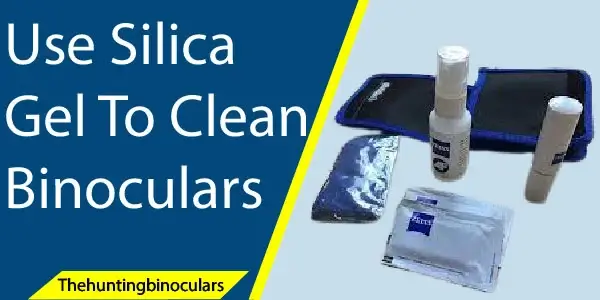
If you want to keep your binoculars in good condition, you have to learn how to clean them. No matter how cheaply you purchased your binoculars or how expensively you splurged, you have made an investment worth protecting. One of the best ways to do that is to keep the lens surfaces clean.
You should not let the lenses get dirty in any case. The lens caps are meant to keep you safe during set-up and transport, but sometimes they may seem unsteady. Knowing how binoculars work can also help you better understand how to clean binoculars.
Because you use binoculars in different weather conditions like the sun, dirt, and rainy season, that’s why there are chances that your binoculars get dirty. You can use binoculars for several purposes.
There are many varieties of hunting binoculars for deer also. If you keep your binoculars clean and dust-free, their lifespan will increase.
Table of Contents
How To Clean Binoculars Properly With 5 Helpful Steps
Here are a few steps that you can follow to clean the binoculars. By following these steps you can also clean your binoculars for under 200 to under1000$.
Five Steps To Clean Binoculars
Are you looking for the best ways to clean the binoculars and prevent binoculars from fogging safely without getting damaged? Here are some simple steps that you have to follow to clean your binoculars safely.

1. Clean The Dirt
Using a blower or soft camel hairbrush on the lenses of your binoculars is the first step toward cleaning them. When you wipe the lenses, please avoid using your breath to fog them, as the moisture will trap dust particles on the glass.
If you use compressed air canisters, you might want to avoid them as well since the chemicals inside can destroy your lens coating.
To eliminate dust and grit, you must prevent pressing them into the lens, which could cause scratches. Suction is best, but you are unlikely to accomplish this unless you have access to a vacuum cleaner.
It is more practical to use a puffer brush, which has a soft brush attached to a small rubber balloon. Available online and in-camera shops, these are inexpensive tools.
Hold the binoculars up as the offending material falls away and blow a few puffs from a distance. Then sweep the brush in circular motions, and any dust or dirt will almost certainly have been shifted.
You can use a soft-bristle brush instead of a puffer if you can’t find one. You can use a clean paintbrush or a make-up brush; the softer, the better, but make sure it’s clean; otherwise, you may worsen things.
2. Use A Cleaner
Gently moisten the lens with a cotton swab dipped in lens-safe solution in a circular motion. Never use window cleaner or eyeglass cleaner. Both of these products are too harsh for your lenses. What kind of moisture absorber do you have in your binocular case? Maybe silica gel? Don’t remove it, and it is doing a valuable job.
Your binos will have cooled down while you were observing the skies. The cold surfaces of the lenses, including the outside, can cause condensation to form when you bring them inside. Any passing dust mole will adhere to your binoculars due to this moisture, and it may also promote fungi growth.
To prevent premature deterioration of your binoculars, you should dry them before storing them. After allowing them to come to room temperature, wipe them down with a soft dry cloth. Pay special attention to the optical surfaces.
Afterward, store them with the absorbent in their case. If you want to recharge silica gel, put it in a low oven for an hour or two and let it dry. Silica gel can only absorb a limited amount of moisture.
3. Use A Fiber Lens Cloth
Use this cloth only to clean the binocular lenses, and then store it in a plastic zipper bag between cleanings to prevent dust accumulation. Use only soft, smooth fabrics such as tissue, paper towels, or toilet paper because fibrous cloths can leave a scratch-causing residue.
4. Clean Binocular Body
Make sure dust is removed from the binocular body by blowing it with your blower. Using a damp cloth, gently wipe it with care so that it does not touch your already-clean lenses. You should not use the same fabric as when you cleaned your lenses. The cloth you use for your lenses is delicate and should not be used for anything else.
5. Keep Binoculars On Cover
Most binoculars for stargazing come with carrying cases that keep them dust-free and protected when they are not in use. Don’t forget to cap those lenses and store them somewhere clean and dry.

Summary
We are summarizing our discussion about how to clean binoculars. Be careful not to disassemble your binoculars to clean the insides. The waterproofing and fogproofing will be destroyed, as well as any warranty. Contact the manufacturer if you need help.
If your problem can be fixed without major surgery, they may be able to help you. You’ll be able to live a lifetime with binoculars if you treat them well. Have a happy experience.
